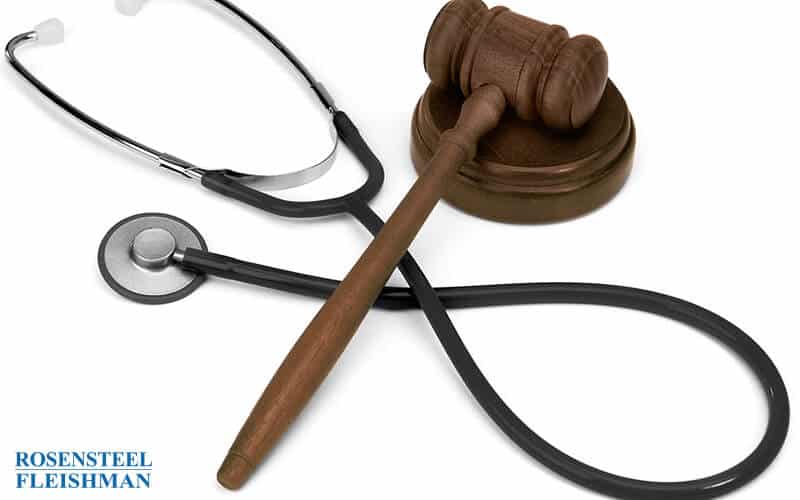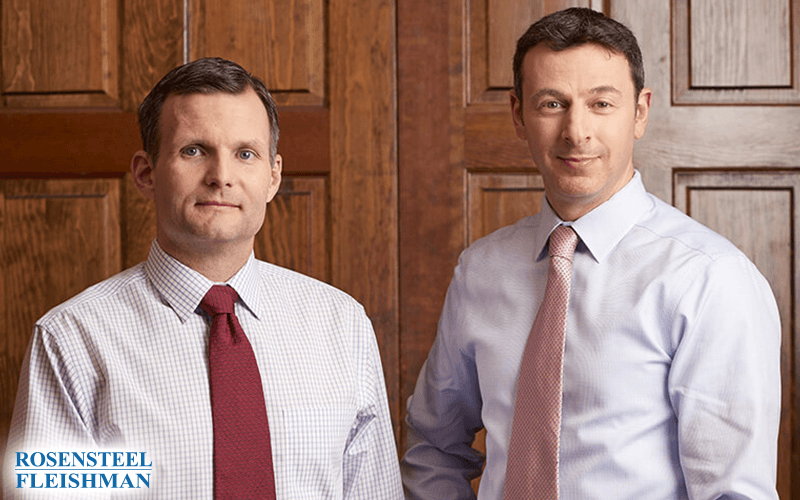Medical care is built on trust, but when that trust is broken, the consequences can be devastating. In some heartbreaking cases, mistakes in patient identification or treatment decisions lead to outcomes that no family should ever have to endure. While these errors might seem rare, they highlight a sobering reality—healthcare providers are not infallible. For […]

Foreign Objects and Medical Malpractice in North Carolina
For medical malpractice actions, the statute of limitations is generally three years from the last act of the defendant giving rise to the injury. However, where a foreign object has been left in a person’s body, that person might not be aware of his injury within this time limit. North Carolina statute recognizes this issue and provides that a person filing a medical malpractice action must commence the action within one year after discovery of the foreign object, provided that the action may not be filed later than 10 years after the last act of the defendant giving rise to the injury. G.S. 1-15(c) is the applicable statutory provision and states as follows:
Except where otherwise provided by statute, a cause of action for malpractice arising out of the performance of or failure to perform professional services shall be deemed to accrue at the time of the occurrence of the last act of the defendant giving rise to the cause of action: Provided that whenever there is bodily injury to the person, economic or monetary loss, or a defect in or damage to property which originates under circumstances making the injury, loss, defect or damage not readily apparent to the claimant at the time of its origin, and the injury, loss, defect or damage is discovered or should reasonably be discovered by the claimant two or more years after the occurrence of the last act of the defendant giving rise to the cause of action, suit must be commenced within one year from the date discovery is made: Provided nothing herein shall be construed to reduce the statute of limitation in any such case below three years. Provided further, that in no event shall an action be commenced more than four years from the last act of the defendant giving rise to the cause of action: Provided further, that where damages are sought by reason of a foreign object, which has no therapeutic or diagnostic purpose or effect, having been left in the body, a person seeking damages for malpractice may commence an action therefor within one year after discovery thereof as hereinabove provided, but in no event may the action be commenced more than 10 years from the last act of the defendant giving rise to the cause of action.
North Carolina courts’ examination of this provision provides a discussion of the statutory history and the rationale for the law. The court of appeals explained in Roberts v. Durham County Hospital Corp. (1982) that prior to 1971, a medical malpractice action resulting from a foreign object being left in a person’s body “accrued immediately upon the closing of the incision, and such action could not be maintained more than three years thereafter even though the consequential damage from such negligence was not discovered until sometime after the operation.”
In 1971, subsection (b) of G.S. 1-15 was enacted to provide that a plaintiff had a three-year period from the date of discovery of a non-apparent injury, provided that the period did not exceed ten years from the last act of the defendant. From that point until the end of 1976, the applicable statute of limitations for a plaintiff in a foreign object medical malpractice action was found in subsection (b). The North Carolina Supreme Court explained in Black v. Littlejohn (1985) that “G.S. 1-15(b), was enacted in 1971 to mitigate the sometimes harsh results of” the previous rule. The Court went on to explain that
The reason that state after state has changed its basic law and policy as to limitation of actions, particularly in reference to malpractice cases, and adopted the discovery doctrine is that the former rule defining the time of accrual of the action as the date on which medical negligence occurred led frequently to harsh consequences for seriously injured plaintiffs, sometimes amounting to total deprivation of legal remedy. The obvious injustice that so often flowed from the application of the old rule disturbed the conscience and the sense of fairness in both legislators and the judiciary.
Subsection (c) was enacted in response to mid-1970’s concerns of medical malpractice actions. “This process of legislative reform originated with the crisis in the medical profession that revolved around the exorbitant cost of medical malpractice insurance and the dramatic increase in medical malpractice claims.” Subsection (c) provides two separate discovery periods - one for non-apparent injuries and one for foreign objects. In adopting the language in subsection (c), the Black Court felt that “the legislature wisely effectuated a compromise to balance the needs of the malpractice victims and those of health care providers and insurers.” The Court also concluded after analyzing the changes made to G.S. 1-15 that the legislature “intended that claimants be given the maximum opportunity in delayed discovery situations to pursue their cause of action subject to the outer time limits in the statute.”
In 1992, the North Carolina court of appeals looked at what it means to “discover” a foreign object in Hensell v. Winslow (1992). In that case, the plaintiff had had plastic surgery in 1984. Five years later, a chiropractor took an x-ray of her abdomen and informed her that an unusual object appeared on the x-ray. After learning of the plaintiff’s previous plastic surgery, the “chiropractor deduced that the object could be a drain which would need to be removed to prevent the possibility of serious injury or death and so informed the plaintiff.” The chiropractor also made the plaintiff’s plastic surgeon aware of the results of the x-ray. The plastic surgeon then wrote the plaintiff a letter acknowledging his review of the x-ray and urging the plaintiff to contact the plastic surgeon to remove drain. The plaintiff did not commence the medical malpractice action until more than one year after the date of the chiropractor’s disclosure of the object, and argued that the chiropractor’s disclosure was not the “discovery” of the foreign object since the chiropractor was not a medical doctor. The plaintiff argued that she did not “discover” the object until the date of the plastic surgeon’s letter.
The court of appeals looked to the dictionary for the definition of discovery and found that it meant "[t]o get first sight or knowledge of; to get knowledge of what has existed but has not theretofore been known to the discoverer." Therefore, the court reasoned that the plaintiff was barred by the statute of limitations because
[t]he x-ray gave plaintiff "first sight" and the chiropractor's professional advice gave plaintiff "knowledge" that a foreign object, probably a drain, was lodged in her body and must be removed. The statute does not qualify "discovery" by requiring that a plaintiff be informed by an expert in the field, beyond a reasonable doubt, that a foreign object exists in his or her body.
The existence of a foreign object in a plaintiff’s body can also justify the application of the doctrine of res ipsa loquitor. Rule 9(j) has a heightened pleading requirement for medical malpractice complaints and requires them to certify that the pleading has “been reviewed by a person who is reasonably expected to qualify as an expert witness under Rule 702 of the Rules of Evidence and who is willing to testify that the medical care did not comply with the applicable standard of care.” However, this certification is not required if the pleading “alleges facts establishing negligence under the existing common-law doctrine of res ipsa loquitur.”
Literally, res ipsa loquitor means the thing speaks for itself. The court of appeals explained in Robinson v. Duke Univ. Health Sys. Inc. (2013) that
[t]he common knowledge, experience and sense of laymen qualifies them to conclude that some medical injuries are not likely to occur if proper care and skill is used; included, inter alia, are injuries resulting from surgical instruments or other foreign objects left in the body following surgery and injuries to a part of the patient's anatomy outside of the surgical field.
Although courts have been cautioned about extending the application of res ipsa loquitor, it is widely recognized that foreign objects left in a plaintiff’s body is an appropriate application of the doctrine, and therefore, in that situation the Rule 9(j) expert certification is not necessary.
If you have been injured as a result of a foreign object left in your body, call an attorney at Rosensteel Fleishman Car Accident & Injury Lawyers (704) 714-1450, to discuss a potential medical malpractice action.
Additional Medical Malpractice Articles
Navigating the aftermath of an accident or injury is never easy. The physical pain, coupled with the emotional stress and uncertainty about the future, can leave you feeling overwhelmed and alone. But here's the thing: you're not alone. In Charlotte, NC, there are professionals who are not just seasoned in the field of personal injury […]
When it feels like your world has been turned upside down after an accident, finding the right support can make all the difference. It's not just about legal advice; it's about finding someone who genuinely cares about your recovery and your rights. In Charlotte, NC, the search for a medical malpractice lawyer near you or […]
Expecting a child, and the birth of that child is an exciting time for parents. Unfortunately, things can go wrong during pregnancy and birth. It is estimated that 7 out of every 1,000 babies born each year will suffer a birth injury. Depending on the injury and circumstances surrounding the injury, there may be liability […]
